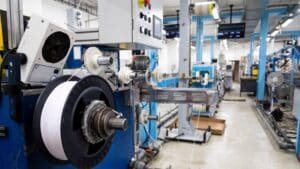3D printing has emerged as a groundbreaking technology, allowing individuals and industries to bring their ideas to life layer by layer. However, as the popularity of 3D printing continues to rise, concerns about the safety of 3D printer filaments have surfaced. This article aims to explore the question: Is 3D printer filament toxic?
Understanding 3D Printer Filaments
Before delving into the toxicity debate, it’s crucial to comprehend the nature of 3D printer filaments. Filaments are the raw materials used in 3D printing to create objects layer by layer. The two most common types of filaments are thermoplastics like PLA (polylactic acid) and ABS (acrylonitrile butadiene styrene).
PLA is derived from renewable resources, making it biodegradable and generally considered safe for home use. On the other hand, ABS is a petroleum-based plastic that requires careful ventilation during printing due to the release of potentially harmful fumes.
Toxic Emissions during 3D Printing
One of the primary concerns regarding 3D printer filaments revolves around the emission of volatile organic compounds (VOCs) and ultrafine particles during the printing process. The type of filament used, as well as the printing conditions, can influence the release of these substances.
PLA is often touted as a safer option compared to ABS, as it generally produces fewer VOCs. However, both types of filaments can emit some level of pollutants, especially when printed at high temperatures. Adequate ventilation in the printing area is recommended to minimize exposure to these emissions.
Health Risks and Precautions
While the emissions from 3D printing are a cause for concern, the health risks associated with exposure to 3D printer filaments are still not fully understood. Studies have shown that inhaling high concentrations of certain VOCs and particles may lead to respiratory issues and other health problems.
To mitigate potential risks, users are advised to adopt safety measures such as:
- Ventilation: Ensure that the printing area is well-ventilated, either by using a dedicated exhaust system or by positioning the printer in a room with good airflow.
- Enclosure: Consider using an enclosure for the 3D printer to contain emissions and direct them outside, minimizing exposure to users.
- Material Selection: Opt for filaments with lower emissions, such as PLA, and avoid printing at excessively high temperatures.
- Personal Protective Equipment (PPE): In cases where exposure is unavoidable, wearing appropriate PPE like respiratory masks can provide an additional layer of protection.
While the debate about the toxicity of 3D printer filaments continues, it is essential for users to be aware of potential risks and take appropriate precautions. Choosing filaments wisely, optimizing printing conditions, and implementing safety measures can contribute to a safer 3D printing experience. As the technology evolves, ongoing research will provide more insights into the long-term effects of 3D printing emissions on human health, helping users make informed decisions about the materials and practices they employ.
Check out our Arctic Blue PLA if you’re in the market for some new filament!




